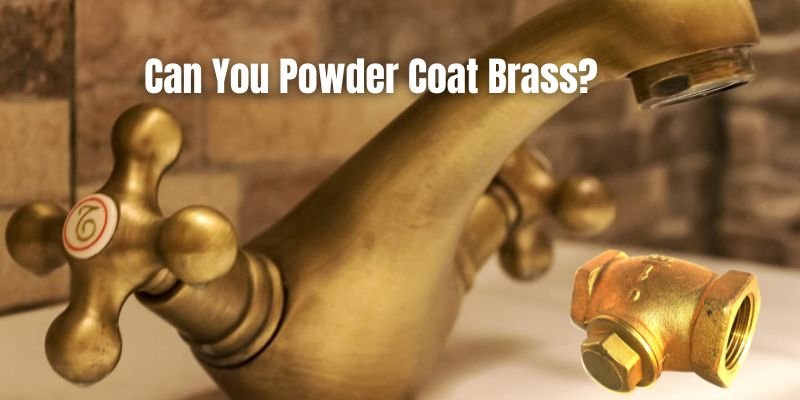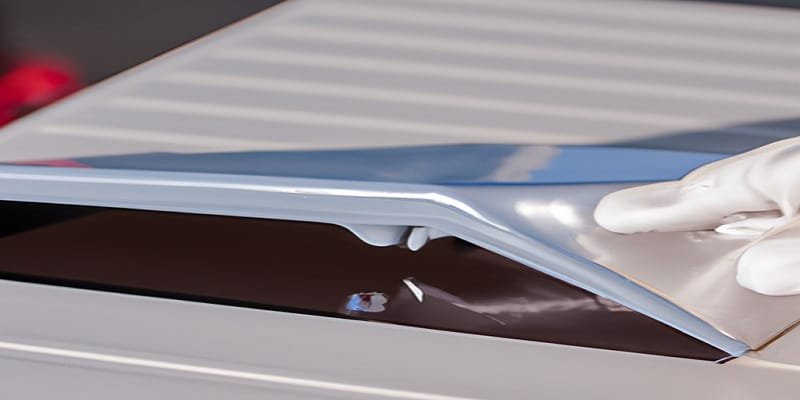Can You Powder Coat Brass? Unlock the secrets of transforming brass with the mesmerizing art of powder coating! In this guide, we’ll delve into the captivating world of powder coating and reveal whether this technique can work its magic on brass surfaces. Get ready to embark on a journey of creativity and craftsmanship like never before!

Can You Powder Coat Brass?
Yes, brass can be powder coated, but it requires careful preparation and selection of the right materials. Brass is a metal alloy made from copper and zinc, and it has a unique color and sheen that can be difficult to replicate with powder coating. However, powder coating can provide a durable and protective finish for brass objects.
Challenges of Powder Coating Brass
One of the main challenges with powder coating brass is that brass tends to oxidize quickly, which can affect the adhesion of the powder coating material. To prevent this, the brass must be thoroughly cleaned and degreased before powder coating. Additionally, a special primer may be needed to ensure proper adhesion.
Another factor to consider is the type of powder coating material being used. Some powder coatings may not be suitable for use on brass, as they may not adhere properly or may not provide the desired finish. It is important to select a powder coating material that is specifically designed for use on brass.
Brass Composition and Compatibility
Powder coating requires the substrate to withstand the high curing temperatures during the process. Brass, with its melting point around 900°C (1652°F), is generally compatible with powder coating techniques that require curing temperatures within this range.
Surface Preparation
Proper surface preparation is vital for successful powder coating. Brass surfaces must be thoroughly cleaned and free from any contaminants, such as oils, grease, or dirt, which could hinder powder adhesion. Techniques like sandblasting or chemical cleaning may be employed to achieve optimal surface conditions.
Masking and Protection
During the powder coating process, certain areas may need to be masked or protected, especially if specific design elements or functional parts must remain unpainted. Proper masking helps ensure precise and clean powder coating results.
Special Considerations for Polished Brass
Polished brass surfaces may pose some challenges for powder coating, as the smooth finish can hinder powder adhesion. Pre-treatment with an adhesion promoter or abrasive blasting might be necessary to overcome this issue.
Advantages And Disadvantages of Powder Coat Brass
When it comes to powder coating brass, there are both advantages and disadvantages to consider. Here are some of them:
Advantages
- Durability: Powder coating provides a durable finish that can protect brass from corrosion, rust, and other forms of damage.
- Versatility: Powder coating can be applied to brass in a wide range of colors and finishes, making it a versatile option for customization.
- Ease of Maintenance: Powder coated brass is relatively easy to maintain, as it does not require frequent polishing or cleaning.
Disadvantages
- Cost: Powder coating brass can be more expensive than other finishing options, such as painting or plating.
- Limited Thickness: Powder coating can only be applied in a limited thickness, which may not be suitable for certain brass parts.
- Heat Sensitivity: Powder coated brass may be sensitive to high temperatures, which can cause the coating to bubble or peel.
Overall, powder coating brass can be a great option for those looking for a durable and customizable finish. However, it is important to consider the potential drawbacks and ensure that it is the right choice for your specific application.
How to Powder Coat Brass: A Step-by-Step Guide
Now that we’ve established the feasibility of powder coating brass, let’s dive into the step-by-step guide to achieve the best results.
Step 1: Surface Preparation
Thoroughly clean the brass surface using a degreasing agent. Sandblasting can also be employed to remove any existing finishes or imperfections.
Step 2: Masking
Identify and mask any areas that should remain uncoated using high-temperature tape or other suitable masking materials.
Step 3: Powder Application
Apply the powder coating evenly to the prepared brass surface using a powder gun or electrostatic sprayer.
Step 4: Curing
Transfer the coated brass to an oven and cure it at the recommended temperature and duration. Follow the manufacturer’s guidelines for the specific powder coating product.
Step 5: Cooling and Inspection
Allow the coated brass to cool down before inspecting the final finish. Make any necessary touch-ups or corrections.
Step 6: Final Finishing
Once the brass has cooled and the finish is satisfactory, apply any additional protective layers, such as clear coats, to enhance durability.
Can You Powder Coat Brass at Home?
While powder coating brass is possible at home, it requires specialized equipment, safety measures, and expertise. The process involves handling high temperatures and electrical equipment, making it more suitable for professional environments. DIY powder coating kits are available, but achieving professional results may be challenging for beginners.
Does Powder Coat Stick To Brass?
When it comes to powder coating brass, the question of whether the powder coat will stick to the brass is a common one. The answer is yes, powder coat can stick to brass, but there are some important considerations to keep in mind.
First, brass is a metal alloy made up of copper and zinc, and the amount of each can vary. This means that the surface of the brass may not be consistent, which can affect the adhesion of the powder coat. Additionally, brass can be prone to oxidation, which can also affect adhesion.
To ensure good adhesion, it is important to properly prepare the surface of the brass before applying the powder coat. This may involve cleaning the surface, removing any oxidation or other contaminants, and applying a primer or other coating to improve adhesion.
It is also important to choose the right powder coat for the job. Some powder coats are specifically formulated for use on brass and other metals, and may offer better adhesion and durability than others.
Overall, while powder coating brass can be challenging, with proper preparation and the right materials, it is possible to achieve a durable and attractive finish.
Does Brass Coating Rust?
When it comes to powder coating brass, one of the concerns that may arise is whether or not the brass coating will rust. The short answer is no, brass coating does not rust.
Brass is an alloy of copper and zinc, which makes it highly resistant to corrosion and rust. Additionally, powder coating provides an extra layer of protection against rust and other forms of corrosion.
However, it is important to note that brass is not completely immune to corrosion. Over time, brass may develop a patina or tarnish, which is a natural process that occurs when the brass reacts with air and moisture. This tarnish does not necessarily indicate rust or corrosion, but rather a change in the appearance of the brass.
To prevent tarnishing and maintain the appearance of brass, it is recommended to clean and polish the brass coating regularly. This can be done with a soft cloth and a mild cleaning solution. Avoid using abrasive cleaners or tools that may scratch the surface of the brass coating.
In summary, brass coating does not rust, but may develop a patina or tarnish over time. Regular cleaning and maintenance can help prevent tarnishing and maintain the appearance of the brass coating.
How Long Does Brass Coating Last?
When it comes to the longevity of brass coating, there are several factors to consider. The quality of the powder coating, the thickness of the coating, and the environment in which the coated brass is placed all play a role in determining how long the coating will last.
Generally, a well-applied powder coating can last for many years without fading or chipping. However, if the coating is exposed to harsh chemicals or extreme temperatures, it may deteriorate more quickly.
Additionally, brass is a soft metal, which means that the coating may wear off over time with regular use or handling. To extend the life of the coating, it’s important to handle the coated brass with care and avoid exposing it to harsh conditions.
In summary, the lifespan of a powder coated brass item can vary depending on several factors. With proper care and handling, a well-applied coating can last for many years, but exposure to harsh conditions or regular use may cause the coating to deteriorate more quickly.
FAQs
Can you powder coat antique brass items?
Yes, antique brass items can be powder coated. However, extra care must be taken during the surface preparation phase to preserve the item’s original charm.
Does powder coating affect brass conductivity?
Powder coating typically has minimal impact on brass conductivity, especially when applied correctly and within recommended thicknesses.
Can you powder coat brass jewelry?
Yes, brass jewelry can be powder coated to provide unique and durable finishes. However, delicate pieces may require special handling during the coating process.
How long does powder coating on brass last?
Properly applied and maintained powder coating on brass can last for many years, providing excellent durability and protection.
Can you remove powder coating from brass?
Yes, powder coating can be removed from brass using abrasive techniques or chemical stripping methods.
Final Thoughts
In conclusion, the answer to the question “Can you powder coat brass?” is a resounding yes. However, achieving successful results requires careful consideration of brass properties, proper surface preparation, and suitable curing techniques. Powder coating brass offers numerous advantages, enhancing its durability and versatility. While there are some limitations to be mindful of, this finishing method remains a popular choice for various applications.


